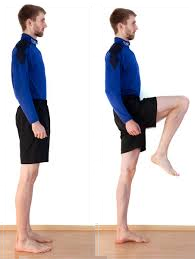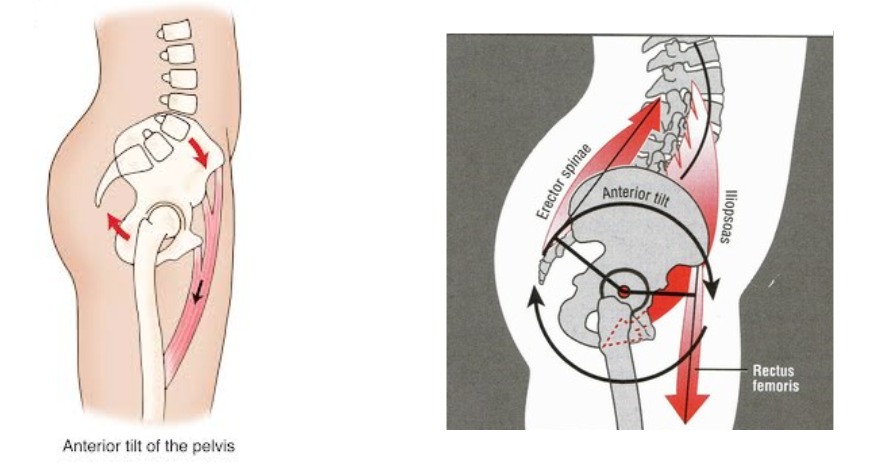There are two quite distinct but often confusing joint articulations through the mid-section, that of Hip Flexion and Lumbar Flexion.

HIP FLEXION
Hip Flexion is the movement whereby the angle between the thigh (femur) and the lower abdominals shortens.
This movement is possible by the contraction of one or more of the following muscle groups:
- Iliacus
- Psoas Major & Minor
- Rectus Femoris
- Sartorius
- Tensor Fascia Latae
- Hip Adductors (Pectineus, Adductor Longus, Brevis, Gracilis).
It is important to note that there is no mention of any of the abdominal muscles, this is because the abdominal muscle group DOES NOT pass across the hip joint and therefore has no action on this joint.
LUMBAR FLEXION

Lumbar flexion is when there is flexion of the lower vertebra independent of any hip flexion activity.
The muscles that cause the lumbar vertebra to flex are:
- Rectus Abdominis
- External Obliques
- Internal Obliques
These abdominal muscles have a another important function, that of PELVIC STABILIZATION during torso and hip movement activities.
Due to the positioning of the abdominals on the pelvis (attachments include pubic and iliac crests on the pelvic bone), these muscles can assist in creating a posterior pelvic tilt, or in a stabilising role, inhibiting anterior pelvic tilt.
The abdominals can also contract as a group to minimise excessive movement/load being placed upon the lower spine/pelvis when performing certain activities (spinal load when lifting/bending).
For more information on Lumbar Flexion, check out my Youtube clip Lumbar Spine Flexion.
HIP FLEXORS AND ANTERIOR PELVIC TILT
The hip flexors, in particular the Psoas Major/Minor and Iliacus (collectively known as the Iliopsoas) are strong hip flexors muscles that can create an anterior pelvic tilt if they are tight/shortened or if they contract without concurrent stabilisation from the abdominal muscles.


It is common to see poor posture through excessively tight hip flexors in conjunction with weak abdominals and gluteals that are incapable of limiting this anterior tilting action of the pelvis.
Anterior pelvic tilting can also occur when performing “abdominal exercises” that require excessive hip flexion activation without the concurrent strength in the abdominal muscles to counteract this movement.
..
..

A typical example includes:
1. Lack of pelvic stability when performing a leg lowering exercise as shown below.

If the client has weak abdominals, this movement will result in excessive anterior pelvic tilt with concurrent excessive lumbar flexion (from the Psoas muscles being attached to the spine) – creating shearing forces, inflammation and ligament/joint damage.
..
..
Check out this article on the role of the core when the hip flexors are engaged.
SUMMARY:
The abdominal muscles function as stabilizers/fixators of the pelvis during hip flexion (not as prime movers of this action).
A key goal for any core strengthing program is to condition the core adequately to minimise pelvic tilting during any hip flexion activity.
In my next Blog Article – I will cover in more depth the core musculature and muscle contraction types that lead to optimum strength/stability through this region.
===============================================================


